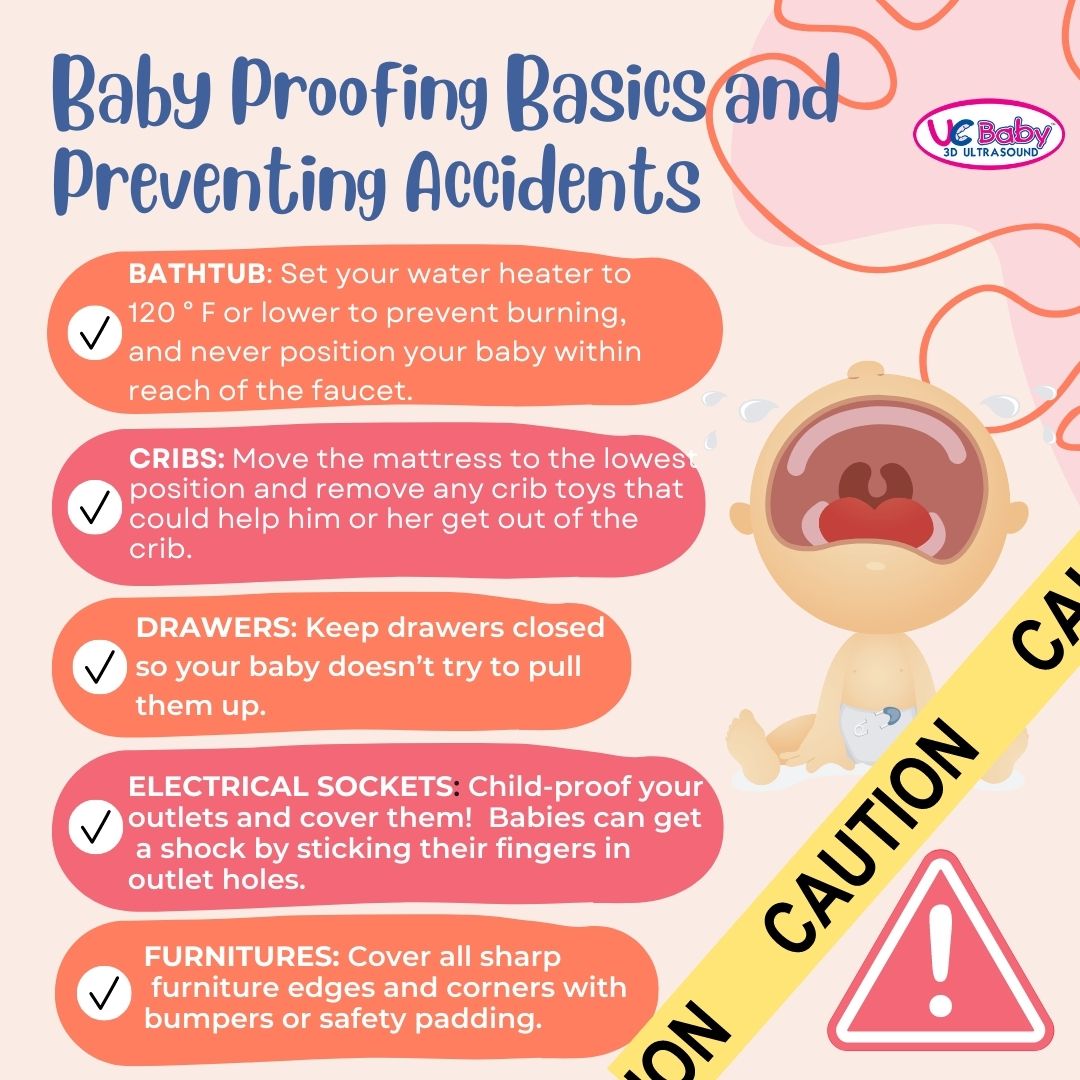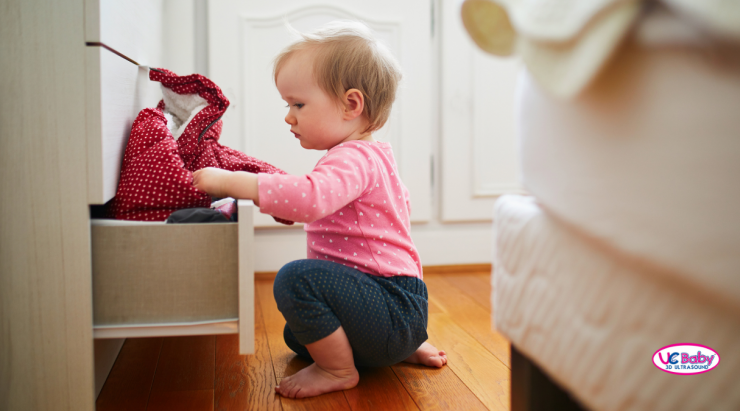Before your little one starts crawling, you’ll have to start babyproofing. However, you shouldn’t have to wait until your child crawls before thinking about baby-proofing your home. Chances are they’ll become mobile overnight, and you’ll be caught unprepared. So here are some helpful tips for baby proofing basics and preventing accidents.
Watch Video: Babyproofing Your Home for Your Little Explorer
Babyproofing the House: Identifying Home Hazards
Get down to your baby’s level and take a crawling tour to identify your home’s dangers. Here’s a run-through of the most common household hazards and how to remove them.
- Bathtub: Never leave your baby unattended in the bath, even for a second. Babies can drown in as little as an inch of water. Set your water heater to 120 ° F or lower to prevent burning, and never position your baby within reach of the faucet. Cover the faucet with a specially made softcover. Additionally, add non-skid strips to the bottom of your bath to help avoid your child from slipping or sliding.
- Cabinets: Your little one will likely get into exploring cabinets, especially those in the kitchen and bathroom. Move all potentially dangerous substances and sharp objects into locked cabinets, or better yet, purchase child-proof safety latches for all cabinets in your home.
- Cribs: As soon as your baby starts pulling himself or herself up, move the mattress to the lowest position and remove any crib toys that could help him or her get out of the crib. Make sure all bolts and screws are tight.
- Draperies: Tie any draperies or blind cords up and keep them out of the baby’s reach as these pose a strangulation risk. Babies can get entangled in them.
- Drawers: Keep drawers closed so your baby doesn’t try to pull them up on top of him or her.
- Electrical Sockets: Child-proof your outlets and cover them! Replace the switchplates with ones that automatically slide up when they’re not in use. Babies can get a shock by sticking their fingers in outlet holes, which may be wet from their saliva.
- Electrical Wires or Cords: Move all cords well out of your baby’s reach. Infants can chew on wires or pull on them, leading to lamps or big objects falling on their heads. These can also be strangulation hazards.
- Flooring: Make sure to put non-slip backings on all rugs and repair any loose tiles and carpeting to prevent tripping.
- Furniture: Cover all sharp furniture edges and corners with bumpers or safety padding.

Baby-proof the Nursery
- Baby Supplies: Put all wipes and other supplies somewhere you can reach them from the changing table, but baby can’t.
- Changing table: Put a thick carpet or rug under the changing table as a safety precaution.
- Cribs: As soon as your baby starts pulling himself or herself up, move the mattress to the lowest position and remove any crib toys that could help him or her get out of the crib. Ensure all bolts and screws are tight and that there are no gaps between the mattress and crib.
- Painting/wallpaper: Make sure all preparations for your baby’s nursery are done eight weeks before your baby’s expected arrival to avoid exposing your baby to any potentially harmful fumes.
Baby-proof the Car
Babyproofing doesn’t just stop at your front door. You should consider your vehicle as well. Your car will be bringing your baby home from the hospital, so it’s essential to ensure that your vehicle is clear of any hazards. Here are some tips to keep in mind while baby-proofing the car.
- Car seat: Install an approved rear-facing car seat in the back seat (middle is safest) and get it inspected for free by a local certified child passenger safety technician.
- Windows: Apply stick-on sun shades to the back windows to block the rays from your baby.
- Lastly, clear the car of any small objects that could be choking hazards such as coins and pens.
Always keep your child in sight unless he’s sleeping, and be extra alert in the kitchen and bathrooms. Staying close by and observant gives you the chance to teach your child that some items are not allowed to touch. Use warning words like « ouch! » and « hot » to reinforce your safety lessons.
And remember, no matter how much you child-proof your home, kids can be surprisingly creative when it comes to getting into mischief.
REFERENCES:
Baby Proofing Checklist: Before Baby Comes Home
Babyproofing the House: A Guide to Keeping Your Child Safe
Written by: Melissa Ureten





 Invitez familles et amis à assister à cet événement mémorable de votre grossesse. Célébrez avec vos proches où qu’ils soient dans le monde ce moment spécial de lien avec l’enfant.
Invitez familles et amis à assister à cet événement mémorable de votre grossesse. Célébrez avec vos proches où qu’ils soient dans le monde ce moment spécial de lien avec l’enfant. Rien n’est plus beau que les battements de cœur de votre bébé. Enregistrez ce son pour toujours dans un Ourson Coup de cœur de UC Baby®. Il ne s’agit pas simplement d’un beau souvenir, mais aussi d’un moyen efficace qui apaise votre bébé pour l’aider à s’endormir.
Rien n’est plus beau que les battements de cœur de votre bébé. Enregistrez ce son pour toujours dans un Ourson Coup de cœur de UC Baby®. Il ne s’agit pas simplement d’un beau souvenir, mais aussi d’un moyen efficace qui apaise votre bébé pour l’aider à s’endormir.

